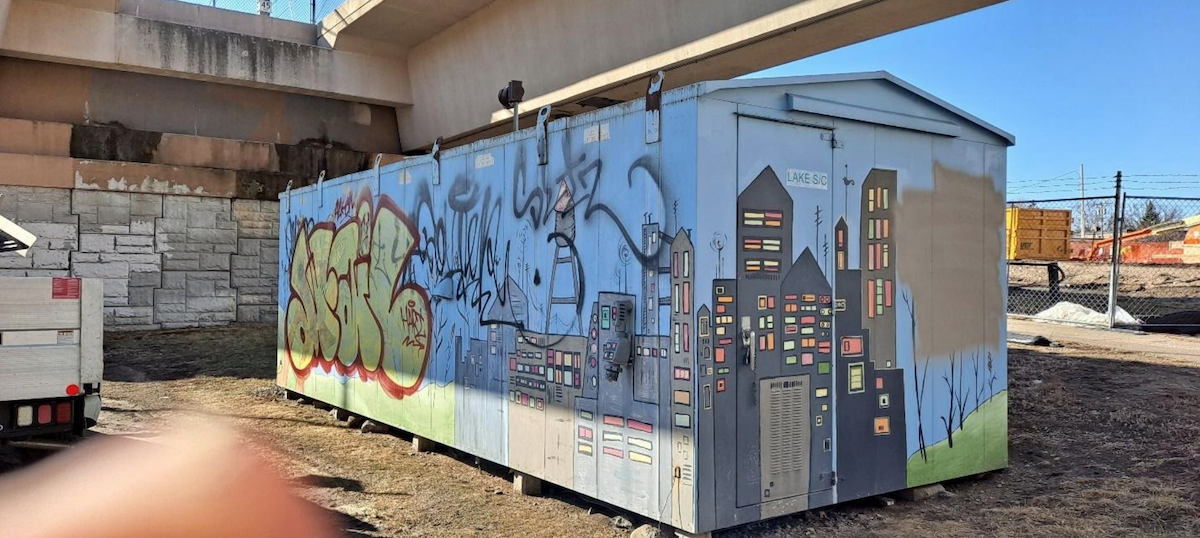This utility building has been tagged and graffitied many times over the years. As part of the Facility Maintenance Support program, a mural was painted on all four sides of the building to deter graffiti. An Art Selection Committee reviewed work by local artists and chose Andrés Guzman for his fine artwork and the theme of local plants and pollinators.

Before
After
Andrés Guzman was born in Lima, Peru, but spent most of his youth in Denver. Guzman says he naturally began communicating through art from an early age. He moved to Minneapolis in 2006 to attend MCAD, with a focus in graphic design and illustration. Though his recent work has been largely created using India ink, he says he’s never been interested in limiting himself to any one visual style or process, rather letting the subject matter dictate the medium best suited to it.
Artist’s Website

Artist info taken from an interview in The Growler.
Cedar-Riverside Station, and five other stations, originally had paver designs on the platforms created by artist Richard Elliott. Each platform was inspired by artifacts or architectural details found in the Minneapolis/St. Paul communities and were developed by working with museums, community members and curators. The specific designs selected as inspirational starting points were picked for their cultural and historical importance and fall into three groups; native motif, immigrant fabrics, and the culture that has developed in Minneapolis as expressed through its architecture. Each platform design stands on its own, but together they make a unified statement about the cultural history of Minneapolis.
Collectively, the artwork is titled, Then Till Now: A History and Culture Based Portrait Of Minneapolis As Expressed Through Six Geometric Platform Designs and originally appeared at Cedar-Riverside, Franklin, 38th Street, 46th Street, VA Medical Center and American Boulevard stations.
Unfortunately, the paver bricks did not hold up well with the severe Minnesota winters and the heavy foot traffic of a transit system. The only remaining paver design exists at American Boulevard Station.
More art by Richard Elliott


This image on the northbound platform: To represent commerce, the artist used patterns from the 1901 Grain Exchange, designed by Minneapolis Architects Kees and Colburn at 46th Street Station. 200’ x 9’
 This image on the southbound platform: A northern European native costume brought over by a Scandinavian immigrant inspired 46th Street Station. 200’ x 9’
This image on the southbound platform: A northern European native costume brought over by a Scandinavian immigrant inspired 46th Street Station. 200’ x 9’